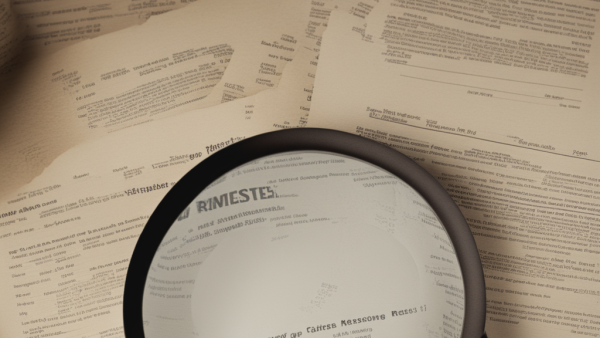
by Sam Franklin | August 18, 2022 | 15 min read
SaaS metrics 101 – Understand, calculate, and improve your CAC
Get fundedLast updated: September 27, 2022
Knowing how much you are spending on customer acquisitions is a crucial metric to determine the number of resources you need to attract new customers and continue to grow your SaaS business.
SaaS companies use the Customer Acquisition Cost (CAC) metric to help plan their marketing strategy and expand their customer base while maintaining a solid profit margin.
Knowing the exact figure it costs to acquire customers also helps evaluate marketing campaigns' success or failure. In addition, it can help you understand if customers are worth the money you put into acquiring them or if the payback period is too long that you should switch tactics.
If you’re interested in what Customer Acquisition Costs are, how to calculate them, and how to improve them, then feel free to read on.
Table of contents
- What does CAC stand for?
- Why Customer Acquisition Cost matters
- How to Calculate CAC
- How to measure and use Customer Acquisition Cost
- How to improve Customer Acquisition Cost
- Final thoughts
What does CAC stand for?

CAC stands for Customer Acquisition Cost. It represents the total sales and marketing costs required to earn one additional new customer over a specific period.
The customer acquisition cost measures the cost of converting a potential lead into a customer and the amount of money a company spends to get a new customer.
Knowing the customer acquisition cost helps businesses understand if they’re getting their money's worth when attracting new customers. In addition, it provides a great metric to measure the return on investment of efforts to expand their customer base.
The customer acquisition cost must include all the overheads and expenses to acquire a new customer. This could include marketing, advertising, sales, salaries, and software costs. However, it is crucial not to have factors that aren’t directly related to acquiring new customers, such as customer retention expenses.
A reduction in CAC shows that a business is spending money efficiently and should see higher profits returns. Conversely, an increase in the CAC would indicate that a company has to pay more to acquire a new customer and will likely be eating into its profits.
Why Customer Acquisition Cost matters

The customer acquisition cost is an excellent growth metric for businesses to determine customer profitability and sales efficiency. It is a direct reflection of the future success of a SaaS business.
Modern marketing campaigns are usually highly targeted. Combining these campaigns with CAC metrics can help identify specific cohorts of highly profitable individuals. It also helps to identify which marketing channels cost the least to acquire new customers, indicating where a SaaS can double down on sales and marketing efforts.
If you are too cautious about your customer acquisition cost, you will likely miss out on potential customers and future revenue. On the other side, if you spend too much acquiring new customers, you will struggle to remain profitable over the long term.
The metric begins to matter more as time passes and lets you see how many months it takes to recover from the cost of acquiring a customer to profit from their repeat business.
Using the customer acquisition cost in conjunction with Customer Lifetime Value (CLV) is a standard method that most SaaS companies use to see if their business is operating efficiently.
Learn more about Customer Lifetime Value
In a nutshell, knowing your Customer Acquisition Costs helps to:
Optimise your LTV/CAC ratio - SaaS businesses should aim for a CLV:CAC ratio of at least 3:1.
Determine and optimise your payback period - You are at a loss as soon as you acquire a new customer. Knowing how long it will take to recoup the investment will help you optimise your strategy.
Track and optimise CAC ratio - The CAC ratio takes gross margin over the costs of customer acquisitions and tracks it over time.
The customer acquisition cost metric is not only valuable for just the individual company. Instead, investors also use the CAC to analyse the scalability of new internet technology companies. These investors use the CAC to determine profitability by analysing how much money can be extracted from the customers and how much it costs to extract it.
Is CAC the same as CPA/CPC?
CPA and CAC are not the same. Both terms are often wrongly used interchangeably but show very different metrics.
CPA stands for Cost Per Acquisition. It is also commonly called CPC - Cost Per Customer.
The cost per acquisition (or Cost Per Customer) is a marketing metric that measures how much you need to pay for a lead to turn into a sale. It measures the cost of acquiring something that is not a customer - a registration, an activated user, a trial, or a lead.
On the other hand, CAC is the total cost to acquire paying customers that generate revenue.
For example, let’s say your SaaS business is a Dropbox competitor, ByteBox, that offers hosting solutions. ByteBox offers two different subscriptions: free and premium. The free option allows users to sign up and receive 50MB of free hosting, while the premium option costs $10 per month.
In this scenario, the CAC would be the cost of acquiring a paying user on the premium plan. But on the other hand, the CPA would be the cost per registered free user.
In a nutshell, the CPA is just the cost of generating the lead. The CPA is the total cost involved with generating the lead and becoming a paying customer that generates revenue.
How to Calculate CAC

Customer acquisition cost can be calculated by adding the total marketing and sales expenses to attract a customer and then dividing that by the total number of new customers.
The first thing to do is to determine the period to evaluate. As a typical software company uses monthly subscription-based models, it is usually calculated monthly. However, it can also be calculated daily, quarterly or yearly - depending on the business model and subscription plans.
Customer Acquisition Cost (CAC) formula
CAC = (total cost of sales and marketing) / (# of customers acquired)
The formula can further break it down into the following:
CAC = (TMC + W + S + PS + O)/CA
TMC = Total marketing costs related to the acquisition
W = Wages associated with marketing and sales teams
S = The cost of marketing and sales software
PS = Additional professional services used in marketing, such as consultants, freelancers, and SEO.
O = Overhead
CA = Customers acquired
What to include in a CAC calculation?
As you can see from the customer acquisition cost formula, it uses two metrics: the total cost of sales and marketing and the number of customers acquired.
So, the first thing to include is all the sales and marketing expenses used in an advertising campaign to attract new users. This includes factors such as salaries, tools, and spending. Everything in these verticals needs to go into calculating CAC.
As you can imagine, this is where subjectivity comes into play. SaaS businesses all have different methods of marketing, resulting in various types of costs to include.
The following is a list of the typical metrics to include in your CAC calculation:
Ad spend - All the money spent on advertisements.
Employee salaries - Cost of both marketing and sales acquisition teams involved with acquiring new customers.
Creative costs - Costs to be creative for team planning and strategy. For example, this might also include travel and lunch expenses.
Technical costs - All the technology used by marketing and sales teams.
Publishing costs - Everything is spent to release marketing campaigns to the public.
Production costs - The costs associated with creating content.
Freelancer costs - Any additional freelancer costs involved with the campaign.
Inventory upkeep - This includes updates and patches for SaaS businesses.
The other metric used in the CAC is the number of new customers. Again, this needs to include only new customers in that specific period.
What is not included in a CAC calculation
It’s important that CAC only tracks the expenses associated with acquiring new customers and doesn’t consider spending on customer retention.
There are no hard-fast rules for this, but here are some things not to include in CAC calculation:
Employee costs associated with salespeople focused on existing account management and renewals.
Sales tools for any employee not selling to new customers.
Credit card and payment processing fees.
Marketing expenses related to corporate branding, logos, and anything not directly related to a specific campaign.
Customer training.
Product, engineering, and support. These are usually part of Research and Development costs.
Don’t include the Churn - the number of customers leaving each period.
Finally, Customer Success is debated whether it should be included or not. Customer Success usually refers to expansionary revenue of upselling customers and keeping them on board - it is not usually to do with attaining new customers. Therefore, most marketers decide not to include CS in their calculations.
Advanced CAC calculation methods

In some situations, a company does not expect to see results from a customer acquisition until later, which could warp the CAC figure and provide inaccurate analysis.
To combat this, the customer acquisition cost calculation can cover more factors to better represent what’s happening in marketing channels. You can make the CAC calculation more accurate by including the additional factors mentioned above.
For example, if the sales cycle of a company takes most customers 60 days from being a lead to a customer, it should be factored into the calculation. Otherwise, it would provide an inaccurate figure.
When developing a more accurate CAC value, one important question is how long is the period between marketing/sales touch points and when somebody becomes a customer?
This is the period between spending on marketing and when you actually acquire a customer.
Returning to our ByteBox example, it might take free users a month or two before filling their 50MB free space before signing up for a premium account. If you don’t consider this time period, you might be underestimating CAC, which would result in some terrible business operation decisions.
In our example, let’s say it takes 60-days for a user to become a paid user. In this case, we would need to adjust our customer acquisition formula to use a time-based customer acquisition cost:
CAC = (Marketing+Sales Expenses From 60 days ago) / New Customers
The only two times you would not need to account for this are if the time delay from spending to acquisition is very short or if the marketing expenses are highly consistent.
Another advanced CAC calculation method involves calculating CAC by marketing channel. It measures the impact of acquisition efforts independently through various marketing channels. For example, let’s say our fictional Dropbox competitor ByteBox uses paid ads, SEO, and email as its marketing channels. Instead of combining all these advertising costs, we can calculate them independently and see which vertical results in higher profits.
How to measure and use Customer Acquisition Cost

Now that you know your CAC, you might want to know how it might be helpful for you to use in your SaaS.
Your CAC can help influence your decision-making regarding your advertising campaigns.
CAC helps to bid on profitable keywords
One of the best ways CAC can help your PPC marketing strategy is by helping you bid on more profitable keywords.
For example, let’s say you run four separate PPC advertising campaigns based on separate keywords. Even if all four advertising campaigns bring in the same number of new customers, the CAC for each would still be different, depending on the campaign's cost.
With all the CAC figures displayed for each campaign, it’s always best to double down on the campaigns that provide the lowest CAC if the number of new customers remains the same.
CAC can optimise for better payback periods
Another way CAC can help in a PPC strategy is by optimising for better payback periods. The payback period is the amount of time it takes to recoup the acquisition costs from a customer.
To find the payback period, simply divide the amount of investment for the campaign by the number of monthly returns you’ll earn from that investment. This will provide a payback period in months.
For example, let’s say you spend $20,000 a month on PPC ads that generate 100 new customers, worth $3,500 in monthly subscriptions. This would mean the payback period is 5.7 months. So, it will take under six months to recoup the initial investment from the campaign.
The shorter payback periods are much more desirable than longer ones. Typically, the higher your CAC is, the longer the payback period will be.
CAC can help to improve customer lifetime value

Lastly, knowing the CAC helps you calculate and improve Customer Lifetime Value. CLV is the predicted revenue one customer will generate throughout their relationship with the company.
Typically, a lower CAC will increase CLV as it costs less to acquire the customer.
The challenge is to spend the right amount on marketing to drive new customers to the product without jeopardising customers' lifetime value and revenue.
If you have a successful SaaS model, your CAC should be sufficiently lower than your CLV.
The CLV:CAC ratio is often considered one of the most important metrics in SaaS businesses. The best thing to do is to calculate a CLV to CAC ratio to provide an indicator of a customer’s value relative to how much it costs to acquire them.
Traditionally, SaaS businesses should aim for a CLV:CAC ratio of 3:1. However, some SaaS marketers believe that a 4:1 ratio indicates a great business model. A ratio of 5:1 could suggest that you’re growing quickly.
How to improve Customer Acquisition Cost

To improve your customer acquisition cost, you need to focus on converting leads into customers, increasing the value of your product, and using customer relationship management tools (CRM) to stay engaged with the client base.
To improve your CAC, you want the number to be lower, so it costs less to acquire a customer.
The following tips to improve CAC should bring the CLV:CAC ratio closer to 3:1.
Invest in conversion rate optimisation (CRO)
CRO tools are designed to help optimise the sales and marketing funnels for your SaaS.
Your first point of call should be making sure it's simple for visitors to convert into leads and for leads to convert into customers. Improving the landing page, site speed, and mobile optimisations is an excellent method.
You can also use tools such as Google Analytics to see how often customers abandon their carts after adding items and figure out ways to complete the sale.
Another excellent method to increase conversion rates is by performing A/B split testing. This involves having two different landing pages and keeping the one that performs the best.
Optimise pricing strategy
You can optimise pricing to speed up the process of reclaiming the customer acquisition cost faster.
To do this, include upselling items such as physical products, customer training, or integration costs. Alternatively, you can provide higher-tiered pricing structures for customers wanting a more in-depth experience.
Add value to the product

To remain successful over an extended period, you need to give customers what’s valuable to them.
The value users perceive is entirely subjective, so collecting customer feedback using surveys and emails is the best way to add value. Comb through the data and notice the parts of your product that customers don’t like, and optimise that section.
Use a customer referral/loyalty program
A customer referral program is a great way to receive exposure without launching a marketing campaign. Additionally, loyalty programs will keep customers feeling valued and will likely convince them to stay subscribed for longer.
Furthermore, new customers that come in through the referral program turn into “free” customers, which will help lower the average CAC over time.
Use Customer Relationship Management software
CRM software will help to keep track of new customers and their movement through the sales funnel. It will help you to visualise how much customers are spending on your website and let you figure out where they spend the most.
The CRM software will help you manage email lists and execute promotional campaigns to keep in contact with your customers.
What is a good CAC for a SaaS business?

Now that you know your CAC, it’s time to understand how well you are performing relative to the market.
Unfortunately, the benchmarking of customer acquisition costs all depends entirely on what industry you are in. One certain thing is that you need to be able to recover your CAC in less than one year.
Benchmarking customer acquisition cost
CAC varies across industries due to several factors:
Length of the sales cycle
Purchase value/frequency
Customer lifespan
Company maturity
The following is an average good customer acquisition cost by industry trends:
Travel = $7
Retail = $10
Consumer goods = $22
Manufacturing = $83
Transportation = $98
Marketing Agency = $141
Financial = $175
Technology (hardware) = $182
Real Estate = $213
Banking/Insurance = $303
Telecom = $315
Technology (software) = $395
As mentioned, the best benchmark for your CAC is using it in conjunction with the customer lifetime value. The CLV:CAC ratio provides a perfect metric to see how much you spend to acquire customers relative to how much the customer brings into the company over their lifetime.
You must aim for a CLV:CAC ratio of at least 3:1 to stay profitable. This means that your customers, on average, spend three times more than it costs you to acquire them.
Final thoughts
Understanding how much you spend to acquire customers is crucial to creating a SaaS business that thrives over a long period. You will likely be eating into your profits if you unknowingly spend too much to attract new customers to your service. Additionally, knowing which marketing channels provide better acquisition rates can significantly improve your marketing efficiency.
Although it might be a tedious process, it is always best to know your CAC and CLV and aim to sustain a CLV:CAC ratio of at least 3:1 for long-term success.
Written by

Sam founded his first startup back in 2010 and has since been building startups in the Content Marketing, SEO, eCommerce and SaaS verticals. Sam is a generalist with deep knowledge of lead generation and scaling acquisition and sales.


